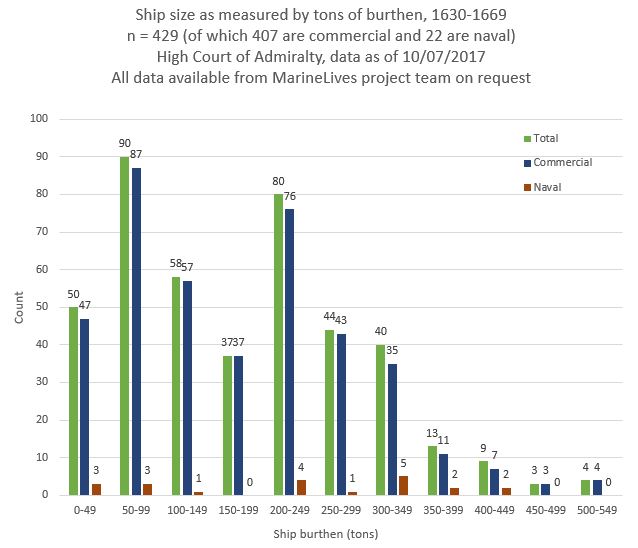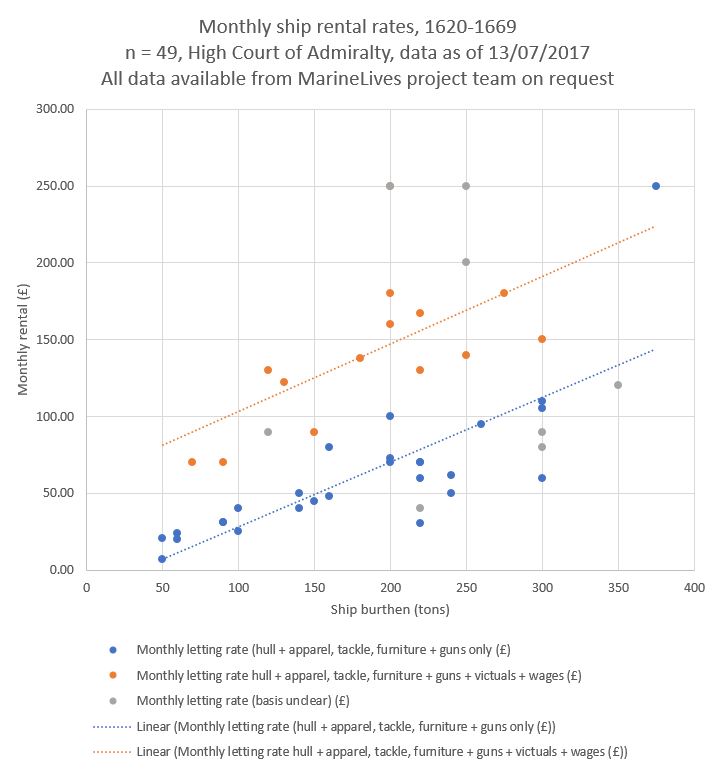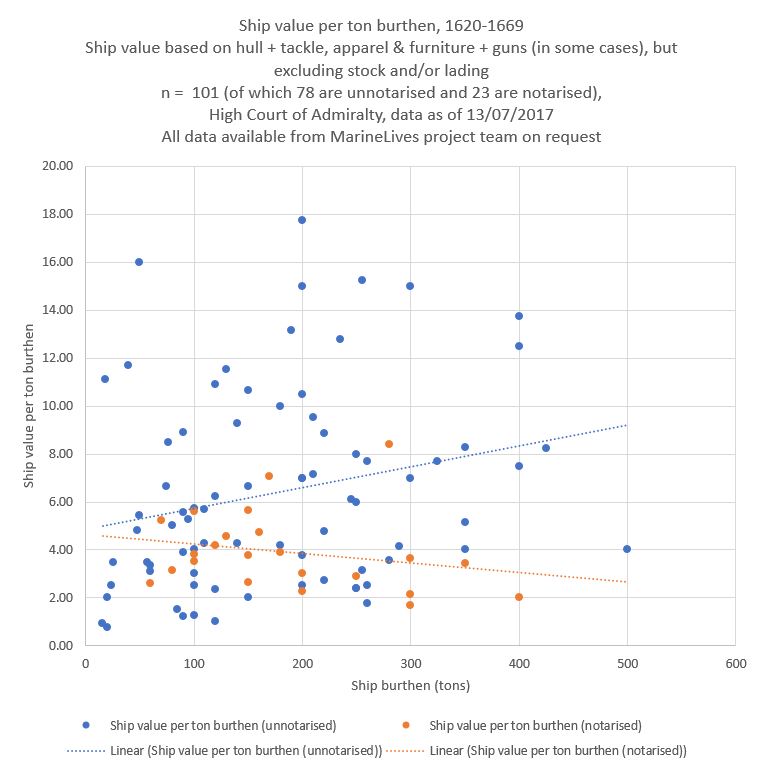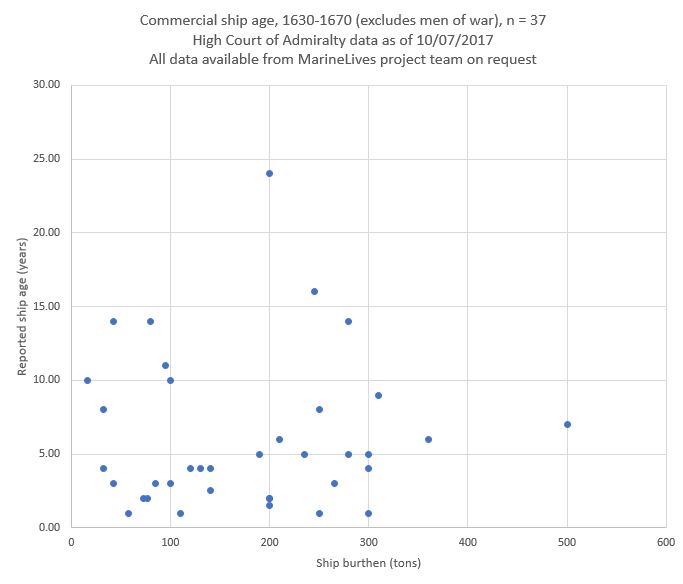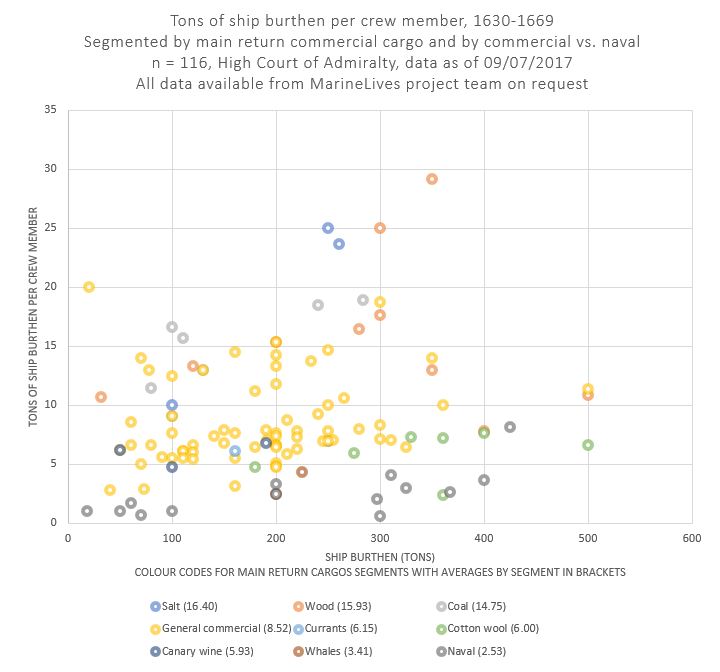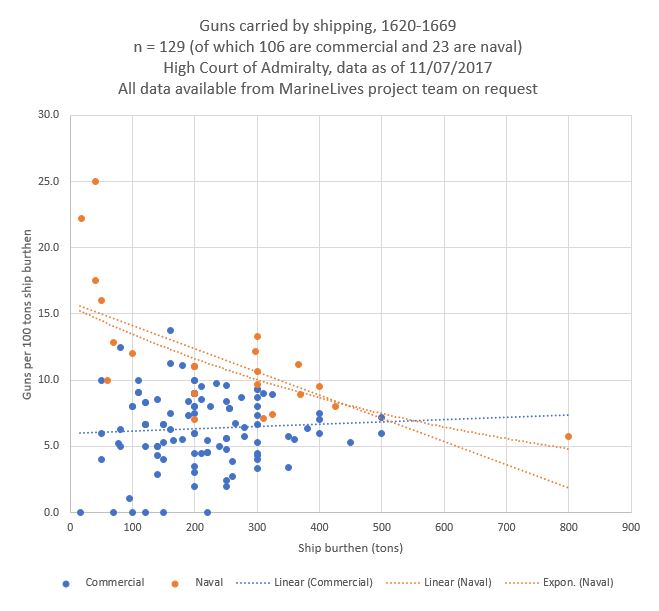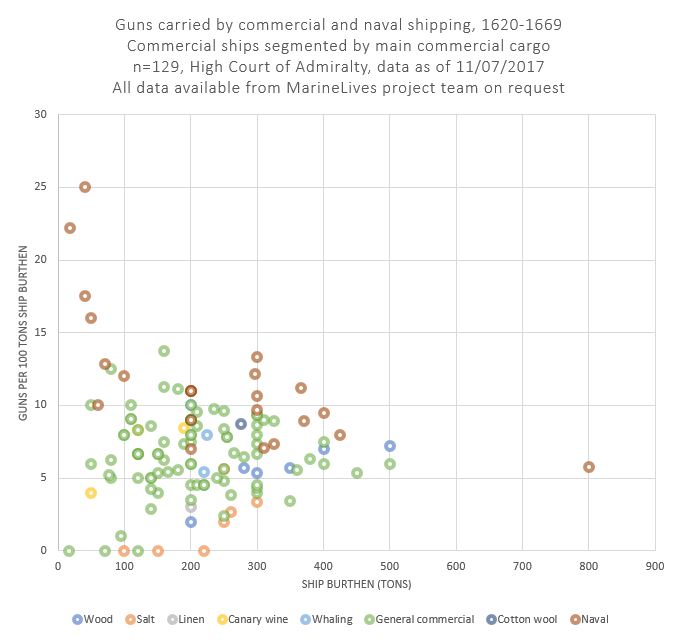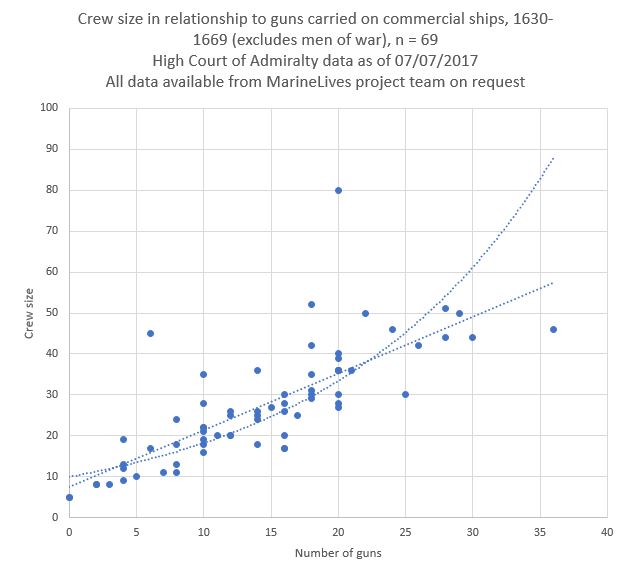MarineLives
Our volunteers
MarineLives is a collaborative volunteer driven project. The project started as a spinoff from a National Archives hackathon in early 2012. We are dedicated to the collaborative transcription, linkage and enrichment of primary manuscripts from the High Court of Admiralty, 1650-1669 (with some excursions into data from the 1630s and 1640s).
Currently, we have just over 10,000 images available (29 GB) and 11,400 pages of full text transcriptions on the MarineLives wiki.
Please contact us if you would like to learn more about this summer's project and how you can help, or if you would more generally like to learn about the work of MarineLives volunteers.
We would like to recognise and thank all those who have contributed to our project (in alphabetical order), whether as volunteer transcribers, annotators, commentators, advisors, interviewees, or PhD Forum participants.
Dr Aquiles Alencar-Brayner
Dr Roberta Anderson
Deborah Ashby
Rachel Bates
Rowan Beentje
Dr Richard Blakemore
Lior Blum
Katie Broke
Dr James Brown
Dr Andy Burn
Elio Calcagno
Michelle María Early Capistrán
Rachel Carter
Giovanni Colavizza
Dr Justin Colson
Thierry Daunois
Dr John Davies
Thomas Davies
Jonathan Dent
Melvyn Dresner
Dr Stuart Dunn
Professor Kai Eckert
Bob Egan
Dr Charlene Eska
Louise Falcini
Emilie-Jane Farrimond
Dr Janet Few
Sara Fox
Dr Ian Friel
Dr Perry Gauci
Marja Geesink
Adam Georgie
Jaap Geraerts
Jamie LH Goodall
Guy Grannum
Colin Greenstreet
Francesca Greenstreet
Adam Grimshaw
Karen Gunnell
Yerevag Hagopian
Dr Liam Haydon
Phillipa Hellawell
Dr Helmer Helmers
Dr Philip Hnatkovich
Rachel E. Holmes
Dr Jenni Hyde
Steve Ives
Alex Jackson
Stefan Jäggi
Elin Jones
Sue Jones
Ross Keel
Dr Patricia Keller
William Kellett
Sara Kerr
John Kuhn
John Layt
Sjoerd Levelt
John Levin
Grace Mallon
Simon Marsh
Dr Alan Marshall
John Miller
Anne Mills
Kate Morant
Matthias Müller-Prove
Professor Steve Murdoch
Dr Shavana Musa
Harriet Richardson
Gordon O'Sullivan
Katherine Parker
David Pashley
Dr Cathryn Pearce
Nga Phan-Bellis
Professor Simone Paolo Ponzetto
Jo Pugh
Patrizia Rebulla
Bethan Reynolds
Daniel Richards
Andrew Richens
Dr Mia Ridge
Dominique Ritze
Dr Gavin Robinson
Margaret Schotte
Steven Schrum
Laura Seymour
Ida Sjoberg
Edmond Smith
Daniel Stewart-Roberts
Chad Stolper
Roger Towner
Alexis Truax
Dr William Tullett
Oliver Turner
Dr Brodie Waddell
Samuel Watson
Jill Wilcox
Royline Williams-Fontenelle
Ad van der Zee
Dr Kathrin Zickermann
Dr Suze Zijlstra
Cäcilia Zirn
and the ever helpful but anonymous @_mapnut
Summer challenge, 2017: How to make money in C17th commercial shipping?
This summer the MarineLives project team is looking at the drivers of profit and loss in C17th commercial shipping. We will publish as we go and welcome comments, contradiction, and offers of help and data.
Early results from our work
There are two clear peaks in the data for commercial ships - the first peak is in the 55 to 99 ton burthen category and the second peak is in the 200 to 249 ton burthen category.
Admiralty Court witnesses refer to ships of 50 and 60 tons as "small" and ships of 300 to 350 tons and above as "large". The smallest ton burthen category in our analysis (1-49 ton burthen) contains lighters, some barges and hoys, and other small river and coastal vessels.
We would be interested in our readers comments on these data.
Are the averages and ranges in the same ballpark as data in the hands of our readers, both from the C17th and earlier and later periods?
What can you tell us about the use to which these different types of commercial vessel were put?
Riverine versus coastal versus longer distance use? Cargo types? Crew and gun levels? Rental rates?
Our current dataset for tonnage based freight rates consists of thirty-six observations for a range of fine, coarse and bulk goods.
They cover short transportation distances, such as Kingsale in Ireland to London through medium distances, such as Cyprus and Scanderoone to London, and long distances, such as Bantam in the East Indies to London.
The outbreak of war had significant impact on tonnage based freight rates. For example, war between England and the United Provinces in the early 1650s, sharply pushed up freight rates on galls and cotton wool from the Eastern Mediterranean to London.
Driving the higher freight rates during times of war was the need to have higher manning levels on ships, higher mariner wages per man, and higher gun intensity per tun of ship burthen.
Our current dataset for monthly rentals consists of forty-nine ships.
Twenty-seven of these are rental rates for hull plus apparel, tackle, furniture and ordinance, but excluding provisions and wages, which were to be paid directly by the renting agent.
Fourteen are rental rates for hull plus apparel, tackle, furniture and ordinance and including provisions and wages, which were to be paid by the ship owner and recovered through the monthly rental. We know the monthly rental rates for three of these fourteen also on the basis of excluding provisions and wages.
Finally, we have eight rental rates for which it is unclear on what basis the rentals were contracted.
Our current dataset consists of one hundred and one ships, of which seventy-eight ship values are unnotarised and twenty-three ship values are notarised. Notarised values are lower (average = £3.90 per ton of ship burthen) comparised with unnotarised vales (average = ££6.40 per ton of ship burthen). Notarised values show a significantly tighter range around the average and mean than do unnotarised values.
We are working on disambiguating our data, but believe the differences in averages, means and range are due to the unnotarised data being more mixed in nature. Specifically, unnotarised data tends to be generated from witness statements of ship value following the seizure of a ship. We have excluded witness valuations of ships where it is clear that the outward, interim or return lading of the ship has been included in the witness valuation. Similarly, we have excluded witness valuations of ships where it is clear that an outward monetary stock has been included in the valuation.
However, even with these exclusions, the valuation of ships during their voyage usually includes some portion of the provisions carried on board the ship. If a seizure is early in a planned long voyage, these provisions could amount from anything between six and twenty months.
Moreover, the valuations of ships during their voyage will include some attribution of value to the refitting and setting out of a ship prior to a voyage, which can vary in the case of the hull from repairs to full graving and caulking or even resheathing, and in the case of the apparel, tackle and furniture, can include totally new provision of sails, rigging, blocks and other materials. Witnesses appear to make some allowance for the wear and tear of a ship on a long voyage and sometimes comment on this when giving their unnotarised valuations in their depositions in the High Court of Admiralty.
We plan to add ship inventories to our database, sourced from High Court of Admiralty appraisements of seized ships. These inventories will provide detailed breakdowns of the value of the physical components of ships in this period.
The average age of ships for which we have age and tonnage data is 6.1 years (n=37), whereas the average age of ships for which we have age data accurate to the year for which we have no tonnage data is 7.1 years (n=41).
Dr Ian Friel has shared with us a summary of data from his unpublished survey of High Court of Admiralty inventory documents from the 1580s. His data are for a period forty to eighty years earlier than our own High Court of Admiralty data. Ian's survey found ages for thirty-nine ships, with an average age of nearly fifteen years and twenty-nine of them of ten years or more in age.
Comparison of textual and numerical data for 1630-1670, with the bulk of the data from the 1650s, suggest Admiralty Court witnesses regarded ships aged between zero and five years as "new" and ships of fourteen years and above as "old".
The average crew size for the larger dataset is 47.3, including six exceptionally manned men of war with 275 or more men per ship (n = 172). The average crew size for the smaller dataset, where we have crew number and ship tonnage is 36.5 (n=116).
We are in the process of analysing these commercial data by geography and by commodity as well as by year to look for patterns within the commercial data.
Amongst the naval ships (a category which includes both ships in the immediate service of a state as well as private men of war under commissions from a state), there is a clear pattern for smaller ships to be particularly heavily gunned.
Commercial ships carrying salt had few if any guns, in contrast to ships carrying Canary wines or cotton wool as their main return cargos.
This is likely to be driven by the low manning levels on salt ships per ton of burthen. Low manning levels meant that there were fewer people available to man guns.
We are looking at relative freight rates for salt, Canary wines and cotton wool, and at sale prices for different commodities, to see if these also drove gun levels.
Coal ships are also likely to have had few if any guns. However, most of the coal ship cases in High Court of Admiralty data concern collisions, resulting in court cases which do not ask about guns. Whereas, most of the salt ship cases in the High Court of Admiralty data concern seizures, and elicit Court cases in which gun intensity is relevant and asked about.
As we dig further into the general commercial category, we should be able to allocate a good portion of these to specific commodity groups and thus be able to improve our analysis of the drivers of guns mounted on commercial ships
The average gun number for just men of war is 22.4 (n=2). The average gun number for just commercial ships is 12.8 (n=137). Our sample of commercial ships where we have tonnage as well as gun number (n=69) has a slightly higher average gun number than for all commercial ships, where only gun number is known.
The commercial gun number average overestimates the gun carrying propensity of commercial ships, since there is a systematic tendency not to report absence of guns from smaller vessels (vessels of thirty to sixty tons burthen). Many of these vessels, particularly those involved in coastal trade or fishing, as hoys, busses and ketches, would not have carried guns.
